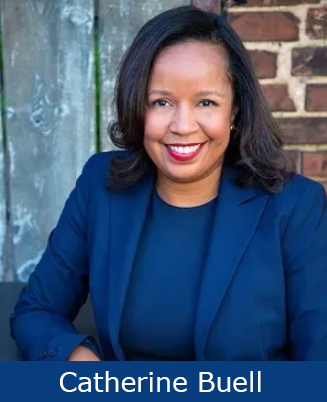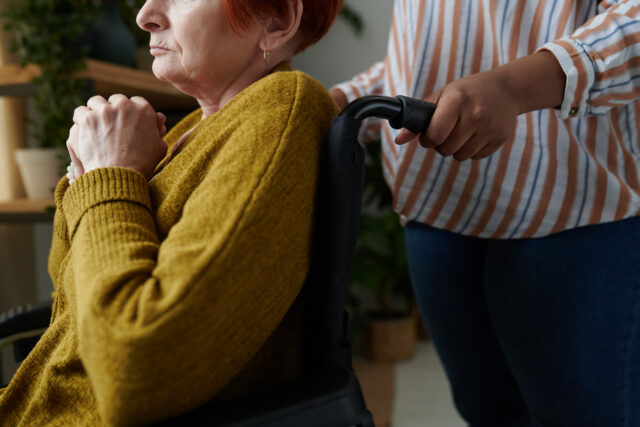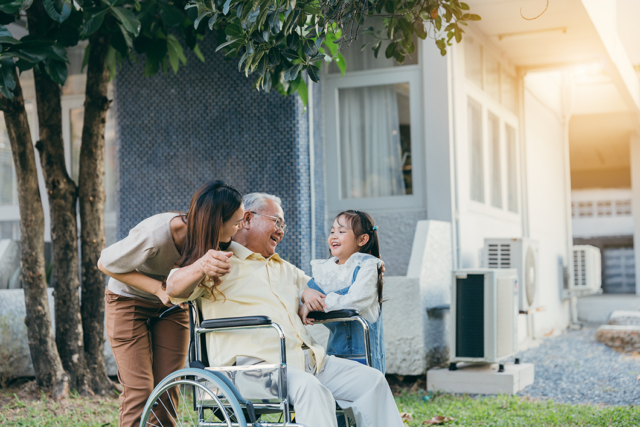
Boomers Need Alternative Forms of Housing (as Does Everyone Else)
We have a housing crisis in the United States that has as much to do with the types of housing available as the quantity. Builders construct luxury McMansions because they are more profitable than middle-income housing. Seniors can’t move out of their single-family homes because there are few alternatives nearby. Both factors limit the supply and thus increase the cost of housing for young families.

I recently had a discussion with Catherine Buell, the former director of Amazon’s Housing Equity Fund, about alternative types of housing that can enhance the lives of baby boomers and younger people as well. She started by discussing the contrasting housing markets faced by prospective home buyers of different ages.
“Many boomers own their houses outright, and quite frankly, for better or for worse, they were able to take advantage of the 2-3 percent mortgage rates. So, homeownership in their world was abundant and inexpensive. For those who are coming into the system today, it is unattainable.”
Part of the problem Buell explained is that there is not a next step for baby boomer homeowners. “If you’re a boomer, you own a home that’s 3,000 to 4,000 square feet and you want to move to a 1,500 or 2,000 square foot home in a walkable neighborhood, you’re competing with a lot of younger families who see those homes as starter homes and there’s not the availability of those homes on the market.”
Some Alternatives
Potential solutions include, Buell says, creating housing that accommodates older bodies with wider hallways and no stairs in walkable neighborhoods. Fortunately, this approach is beginning to be adopted in some places with the development of “wellness” communities.
Buell cited Serenbe in Atlanta as an example. “It’s a golf cart community that really emphasizes wellness and biophilic design and also social interaction. And it has something in the air that just makes you feel better.” These communities are for all ages but work well for residents as they grow older.
Part of their design helps fight loneliness. “One of the first buildings they built at Serenbe was a coffee shop with an oversized meeting space as opposed to your community meeting room, so creating a place where people would naturally congregate. We’re starting to see social clubs gain in popularity, so don’t think senior center, think social club where people can come in style, hang out and talk to their neighbors.” (One caveat about the Serenbe example is that it is not a solution to the affordability problem, as their housing options do not appear to come cheap.)
Creative solutions require changes in zoning laws, some of which restrict how many unrelated family members can live in the same housing unit, which bars a Golden Girls solution of a number of older people living together and supporting one another. “But honestly, I don’t think that a lot of lawmakers and folks who are having these conversations are really thinking about the shift in demographics and what that means for their jurisdictions. It’s quite natural for people to want to protect their property values and not see large scale redevelopment come into a community that has a very different character. But starting to think a little bit outside the box of what can create more opportunities for people to live better in their home communities.”
In addition to wellness communities, Buell sees other creative solutions enabling aging baby boomers to share their homes that are too large for them. One is PadSplit, in effect an Airbnb for roommates that connects “people looking for an affordable place to live with property owners who have private rooms for rent.”
Housing and Health Care
Buell pointed out that if we don’t create appropriate housing for seniors, it will exacerbate the coming elder care crisis. If aging baby boomers don’t have the support they need where they live, they will rely more heavily on the health care sector. “Our public health resources are stretched already. With the aging market and increasing costs in healthcare, there is a double whammy. Our healthcare systems cannot afford to have everybody age in place.”
A Call for Action
“I’d like to see more options on the table now so that we have a number of different choices,” Buell concluded. “And this is a personal issue for me. A number of my sisters and aunts are starting to retire and there’s just not a lot out there for them. I worry about their quality of life in their “third trimester.” They’ve done such great, interesting work their entire lives. They’re all at different levels of the income spectrum and some who are doing quite well financially, but even for them quality of life is lacking because we don’t have alternative housing and community development solutions.”
For more from Harry Margolis, check out his Risking Old Age in America blog and podcast. He also answers consumer estate planning questions at AskHarry.info. To stay current on the Squared Away blog, join our free email list.







The emphasis here is if I am not mistaken in building community housing for boomers/elderly. Different than merely downsizing. Here in northern California you have Rossmoor for those 55 and above. Really nice and visited often but would personally not want to live there. So have to wonder how this vision gets translated.
Good initial thoughts on a complicated issue. Out of the box thinking will assit with housing solutions.
There are plenty of “rust belt” communiteis located in or near cities (think Detroit, Scranton, Cincinatti, Cleveland, Providence, South Bend, Buffalo, Rochester, St. Louis, Milwaukee, Pittsburgh- the list is almost endless, etc.) that have the utilities infrastruture, existing, underutilized housing stock in need of repairs/rejuvenation, health care that is nearby and public transportation that is in place. These communiteis would benefit greatly if they advertised to Boomers to move to these places and give the entire economy a boost with incoming people AND capital! Every retiree cannot live in FL or CA only. Numerous housing arrangements can be implemented in these cities for everyone that wants to create new living communites for all ages.
Interesting thought. I just had lunch with a friend who grew up in southern Illinois. He said his family home was recently appraised for $180,000 and he estimates that it would cost will over $1 million where he lives now in Boston.
Excellent story that highlights the shortsightedness on the part of builders and zoning regulators. The prevalence of solo agers is often overlooked. They need options that differ and are more creative than the tired old saw, “aging in place.” We don’t have good options or enough appropriate spaces in our country for the biggest generation in history to grow old in a supported, comfortable manner.
Lulz , as an older X , dream on , my properties are going to my kids , both are in age and they’re getting one of my duplex , will be staying in my other duplex and I seriously don’t need to rent the upper apartment no more , not worth. I have no responsibility in the housing crisis, don’t see why I should bear any consequences
Got as far as Serenbe and thought, well, this doesn’t apply to me (or anyone who is not wealthy). I love the ideas but I want affordability, privacy and independence. Someone from Amazon suggesting that we should all live in a place like Serenbe makes me feel like Amazon is out of touch with the rest of the world.
As with raising children, it takes a village.
Interesting piece — although citing the Serenbe project proves the point that for wealthy people, there are plenty of housing options.
“they were able to take advantage of the 2-3 percent mortgage rates.”
Two and three percent mortgage rates? Take care look at the mirtgagecrate history at the St. Louis FED site. Just please stop it.
Given many of us had a 15% mortgage in the early 80’s, all was not as easy as this article suggests. This seems to be a perception amongst non-Boomers that we had it easy and it is our fault that they do not have it “easy”. And no, home ownership was not easy nor abundant as this author writes. We had our own struggles.
You are right. Interest rates were so high in the early nineties that i took a variable rate mortgage just to buy my first home. Then spent a few years throwing money at the principal to make sure the mortgage did not blow up on me.
When I bought my home it was possible to sell your current home and purchase the next one for a greater or equivalent price and not pay taxes on the gains from the first house. That is gone now except for a small exclusion that is almost meaningless in high cost areas. The boomers now sit in their too big homes so their beneficiaries can inherit the house at current market value. To sell now would mean a loss of thousands to their heirs. Does anyone know why and who wanted that old method of sell/buy primary home to go away?
Interesting question. This article published by the Congressional Research Service seems to answer it: https://www.congress.gov/crs-product/RL32978. It says:
“When the rollover provisions and one-time exclusion for the elderly were replaced by the current exclusion (in the Taxpayer Relief Act of 1997, P.L. 105-34), a major reason given was to reduce the record keeping burden and to eliminate the need for referring to records and making judgements about what expenditures are improvements.”
Further, the $250,000 exclusion “was presumably meant to eliminate any capital gains tax on home sales for the vast majority of taxpayers, but the rise in housing prices and the passage of time have reduced the value of the exclusion. With no revision and an increase in housing prices, an increasing share of gains would be subject to tax.”
Maybe we should raise the cap to what $250,000 in 1997 would be in 2025 dollars and than have it indexed to inflation.
This is a problem that will resolve in its own. Those born in 1946 will enter their 80’s in the next year or so. At that point we boomers will start leaving this life in massive numbers and all of our property and wealth will be in the hands of our children. We are creating the wealthiest middle class of any civilization in history. I think there’s a good chance our kids and grandkids and great grandkids are going to be fine.
That will be true for some, but far from everyone. The increasing disparity in wealth in this country means that a few baby boomers will leave their children a lot while most will leave them little. Often those who will inherit have already benefited from the advantages of wealth in terms of superior education and more stable households.
My advice to any younger person is to save your money. In the next decade tens of millions of Boomers will be leaving this world, throwing 8 million houses on the market. Between the forced selling from dead people and private equity unloading houses in an attempt to reap profits, bargains will be had, couple that with immigration crackdowns as downward driver of prices. The Millennial Generation was as big as the Baby Boom and what we are seeing is what young people coming of age in the 1970’s and 80’s faced. The Private Equity did their homework and started buying up cheap foreclosed housing after the 2008 crash. Right now their is a boom in retiree housing to get the the Biggest and last wave of younger Baby Boomers that is running out of steam as the last boomer is 61 years old this year. With the collapse in prices, high real interest rates could add more fuel to the price downdraft in future years as the biggest savers are over 50. Gen X is smaller and cannot buy as many Gov’t bonds as the boom did, that is where the 2-3% interest rates came from in recent years, not seen since 1964. Sit tight Gen Z.
Boomers when they need something other than a SFH: “hey, where are the other options!!!!!”
sheesh
Mobile homes or trailers on public lands. Quickest and least expensive solution!